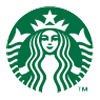 LOCATION:
LOCATION:
Milepost 170.1 – Westbound
Between Exits 161 and 173
County: Cuyahoga
How it got its name
FUEL SERVICES:
FOOD SERVICES:
 Burger King - (24 Hour)
Burger King - (24 Hour) Starbucks
Starbucks
 Popeyes
Popeyes
TRUCKERS LOUNGE
- Designated truckers lounge with easy access from the 80-space commercial truck parking lot
- Separate restrooms & complimentary shower facilities
- Coin-operated washer & dryers with vended towels, sundries, and laundry supplies
- Touch & Win Ohio Lottery EZ Play video gaming terminals
OTHER SERVICES:
- Travel Mart - Customers looking for gifts, merchandise, on-the-go snacks and beverages can find them here
- Snack and beverage vending machines.
- Travel Board InfoCenters and Turnpike Television (traffic alerts and weather information
- ATM
- Ohio Lottery- Travel Mart and Sunoco are the authorized Ohio Lottery retailers at this location.
- Arcade Games
- E-ZPass – stop by the E-ZPass Vending Machine at this location to pick up an E-ZPass transponder 24 hours a day. (Passenger car customers only)
HOW GREAT LAKES SERVICE PLAZA GOT ITS NAME
The world’s most important inland waterway system, the Great Lakes, lies just 15 miles north of the Ohio Turnpike at the Great Lakes Service Plaza. The busiest of these lakes, from the standpoint of tonnage entering and leaving its ports, is Lake Erie, which forms most of the northern boundary of Ohio.
The five Great Lakes – Superior, Michigan, Huron, Erie and Ontario – constitute the largest body of fresh water in the world. Except for Lake Erie, they are extremely deep, as inland seas are measured. Lake Superior reaches a depth of 1,302 feet. The sailing distance from Duluth, at the western end of Lake Superior, to the eastern tip of Lake Ontario is 1,165 miles – more than one-third the width of the American continent.
Great Lakes ships carry 80 percent of all the iron ore used in the United States, plus tremendous qualities of coal, limestone, grain, petroleum products, and other commodities. During World War II, Great Lakes freighters hauled four times the tonnage transported by the ocean merchant marine.
The navigation season generally runs from mid-April to mid-December. During these months hundreds of great ships of United States and Canadian registry, as well as many flying the flags of European countries, ply the lakes. Modern lake bulk carriers are 600 or more feet long, carry up to 20,000 tons of iron ore, and can make the 1,800 – mile round trip between Lake Erie and Duluth in 5 ½ days. The longest vessel on the lakes ranks third in length among all the ships in the United States Merchant Marine.
Commercial fishing has been a leading industry on the Great Lakes for a hundred years. Whitefish, bass, pickerel and trout are obtained commercially in sufficient quantities to constitute an important food supply. The waters, shores and islands of the lakes yearly provide vacationing millions with facilities for game fishing, boating, bathing and other outdoor recreations.
The Great Lakes provided an open water passageway to the heart of the new continent for French missionaries, explorers and fur traders who blazed a trail for the pioneer settlers. The first white men to see the Great Lakes were probably French fur traders around the year 1612. The fur resources were the cause of contention between the French and British for many years. In 1763, after the French and Indian War, France surrendered her Great Lakes claims to the British. The next struggle involving the Great Lakes was the War of 1812. By defeating the British in the Battle of Lake Erie near Put-In-Bay in September 1813, Commodore Oliver Hazard Perry paved the way for an invasion of Canada and the ultimate victory of American forces. After the war, possession of the lakes was divided between the United States and Canada, and for almost a century and a half the border line between these two great nations has remained unfortified.
The opening of the Erie Canal in 1825 was a great spur to shipping on the Great Lakes and contributed to the Midwest’s growing prosperity. In the mid-twentieth century, the completion of an east-west system of toll roads and the development of the St. Lawrence Seaway bid well to insure the continuance of the Great Lakes area as the world’s foremost industrial region.
The development of northern Ohio as a great industrial center is a direct result of the convenient location of its harbors on the Great Lakes shipping lanes. To the south lie the coal resources of eastern Ohio, western Pennsylvania and West Virginia. Iron ore is mined at the western tip of the Great Lakes. The shipping of iron ore into northern Ohio ports, close to the supply of coal, has made it possible to produce steel in the area southeast of Lake Erie with maximum economy.
Ohio’s ports rank high among those of the world in the handling of basic commodities. Cleveland is the world’s largest iron ore unloading port, and Conneaut ranks second. Toledo is the world’s number one coal shipping port, while Sandusky is second among Great Lakes’ ports. Fairport is an important limestone unloading port. Other Ohio ports which ship coal and receive large quantities of iron ore, stone and sand are Ashtabula, Lorain and Huron.
Transportation between the Great Lakes industrial centers and the ports and markets of the eastern seaboard is greatly facilitated by the Ohio Turnpike. Likewise, the Turnpike has made the far-flung vacation and recreation spots of the Great Lakes area more accessible to Americans everywhere.